

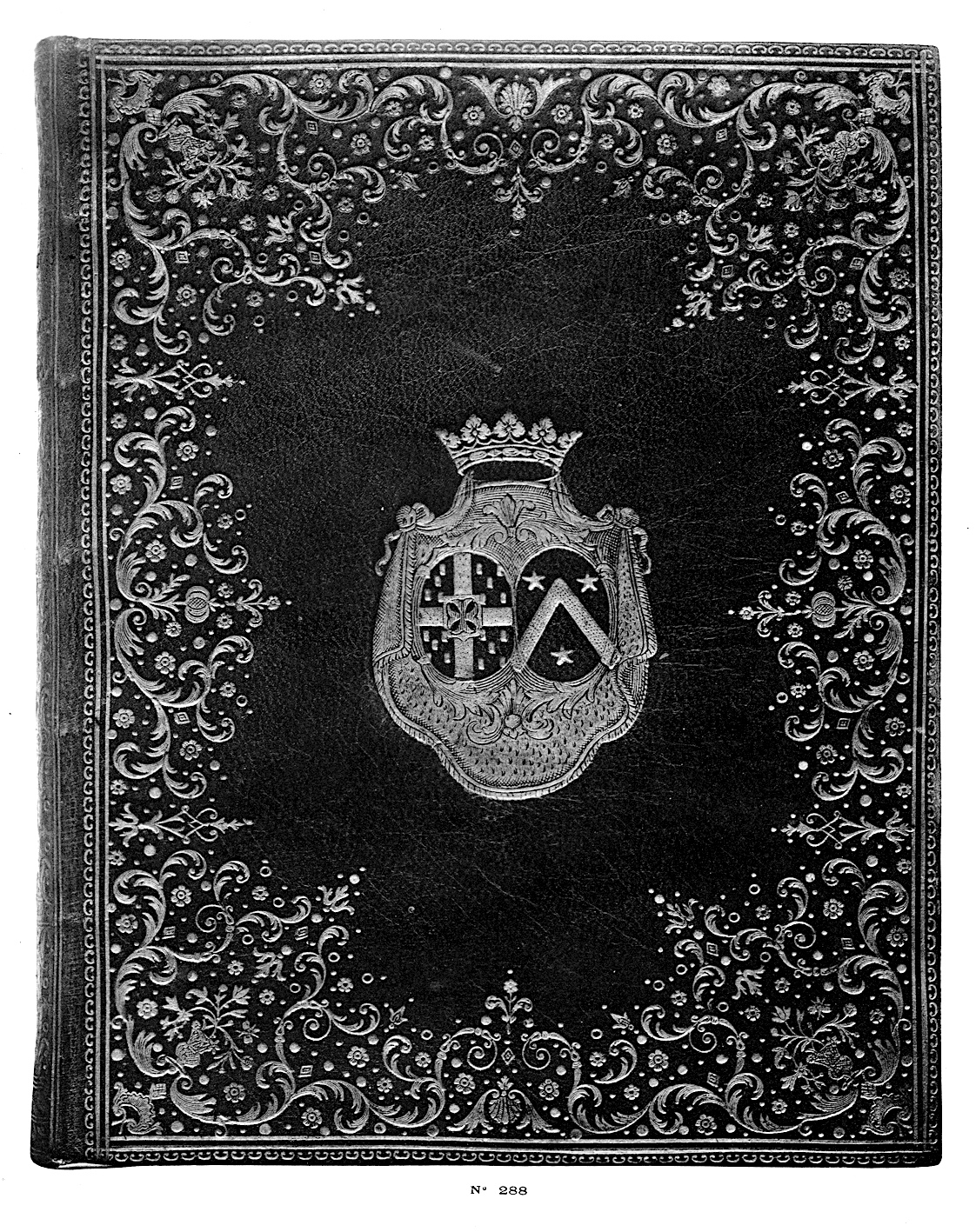
| The reproduction of the binding shown above is found in a truly amazing 1910 publication Livres dans de riches reliures des seizième, dix-septième, dix-huitième et dix-neuvième siècles. Paris, Damascène Morgand, by Édouard Rahir. You cannot find better quality reproductions especially in this day and age, I have been so used to working with inferior modern printings that I almost forgot what real quality looks like, if you enlarge the binding shown above you will see real detail not the blurry dots of 'modern' printing. Yet I hesitate to show this binding as I am not 100 percent sure that this binding was made by René-François Fétil, I will however show you why I have my doubts. On my first tests I thought there might be a problem of scale, and fortunately Barber has the bulbous vase corner tool that we see here in his tool catalogue. |
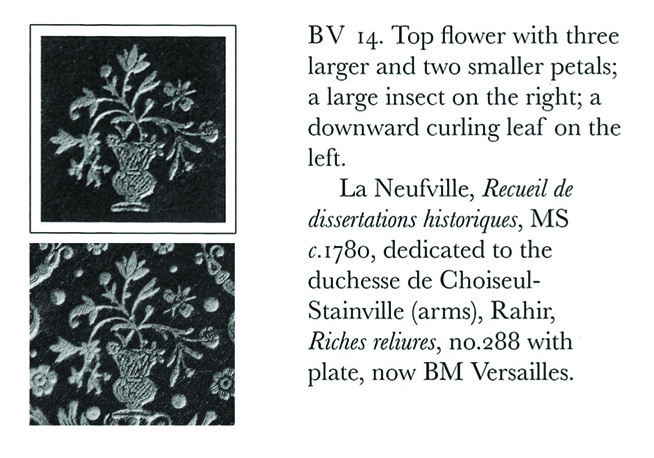
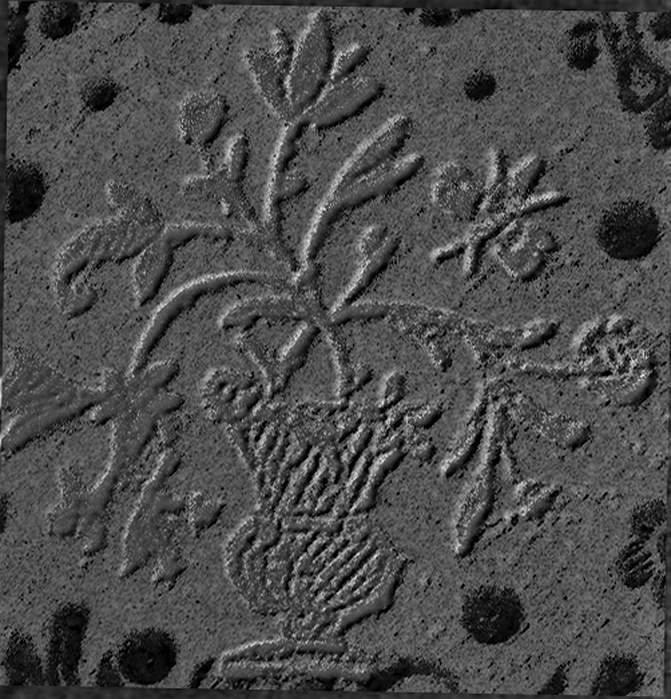
| In the Comparative Diagrams shown above I have placed a transparent copy of the 288 imprint over the BV 14 illustration the dark outline is an effect of shifting the 288 imprint slightly to the side, we can see that the scale of these two imprints match very closely, thus our reproduction of binding 288 is accurate to within 1 percent probably closer to half a percent. The first question we might ask is why would Fétil have two very similer tools of this type. (see page 6, binding 127 for a similar Fétil BV imprint) |
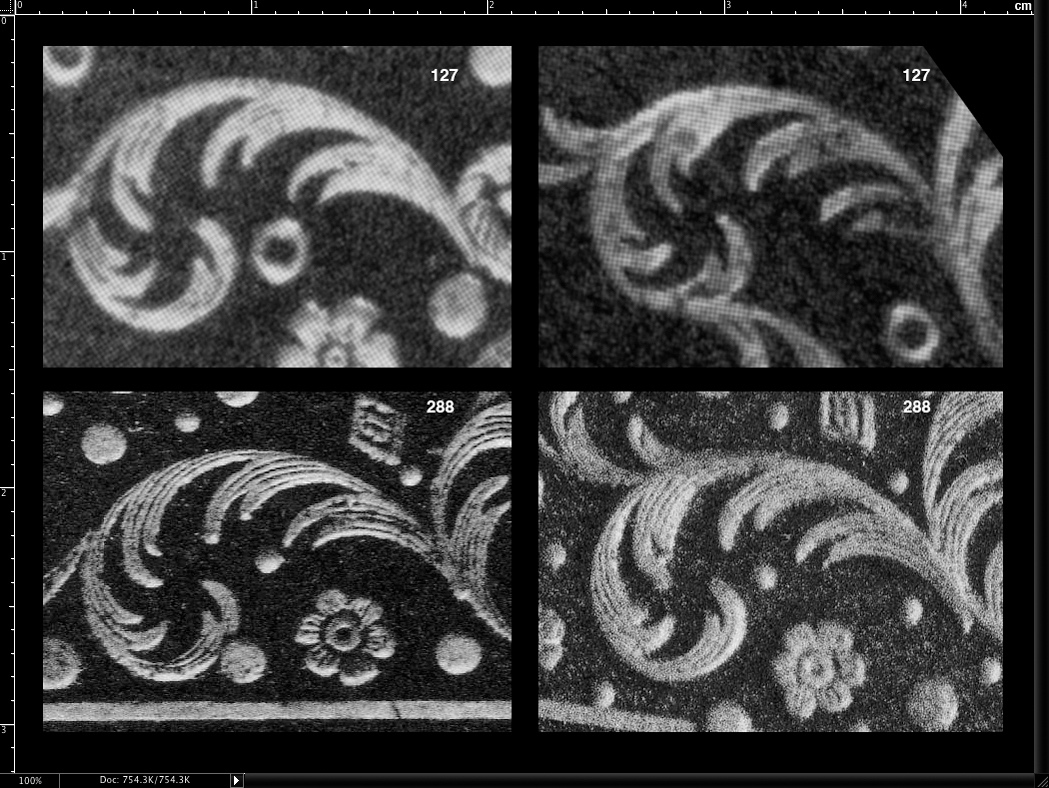
| In Comparative Diagram 2, I have attempted to compare imprints from binding 127 with those of binding 288 shown here. Right away we are stuck with the problem of fussy modern imprint reproductions as opposed to very sharp 1910 heliogravure reproductions, the two imprints look very similar, they might actually be the same, more testing is needed. We can observe however that the 127 flower accessory is not the same as that of the 288 example. |
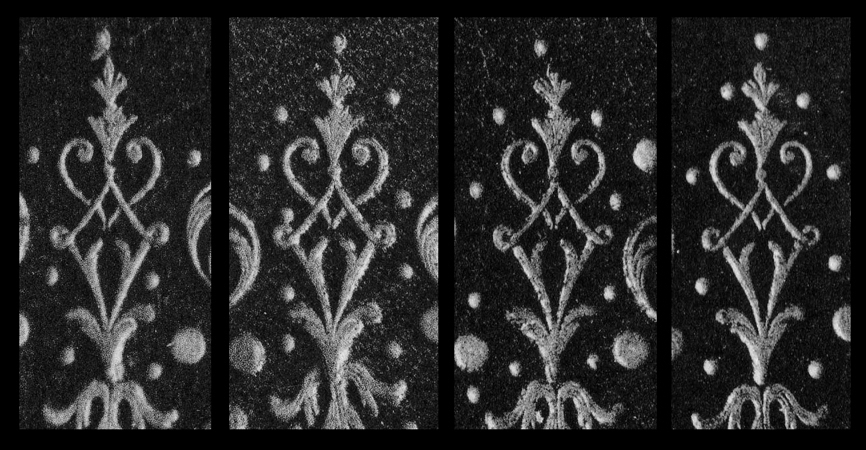
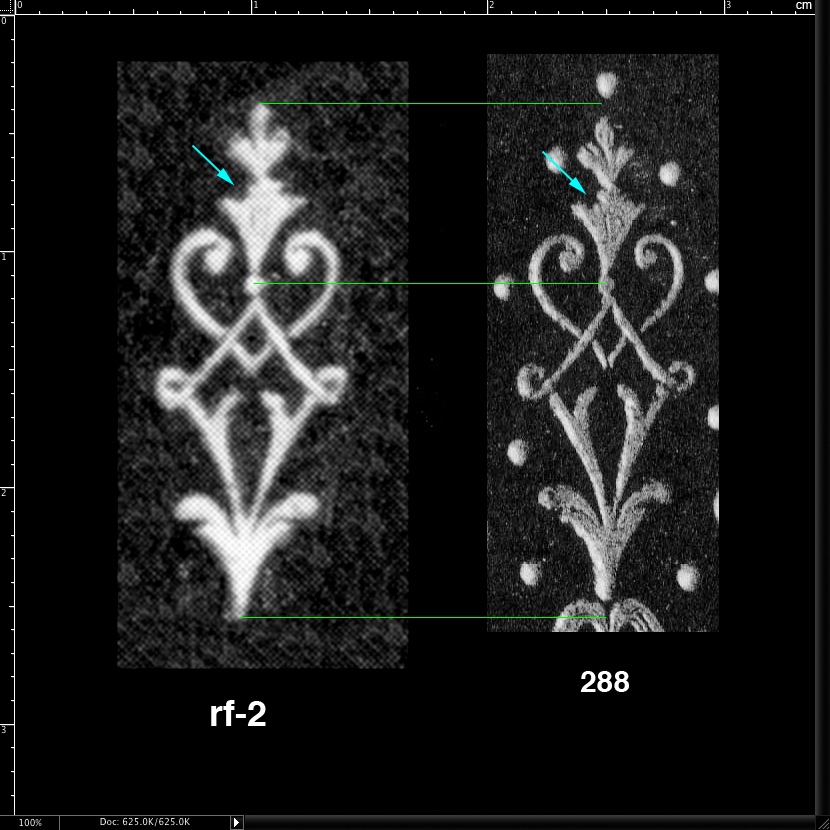
| In Comparative Diagram 3, I have attempted to compare the rf-2 imprint from binding 127 with those of binding 288 shown here. This is where conspiratorial thinking starts to take over, this is where I started questioning scale, these two imprints look very similar almost identical except for scale, we know the scale is accurate and looking closer we can see the the central rombus shape of the 288 imprint is actually longer than that of the 127 even though it is shorter over all. The blue arrow pointing to an obvious lack of symmetry that has been mimicked in the 288 model. Here we see some clever copying however these imprints derive from different tools in which case we have a serious problem as it is mainly this imprint the rf-2 that yeilds a strong Fétil flavor. Normally we would stop here and go on to the next binding, however we can look at a few more examples. |

| Here is a conundrum, of the imprints shown in Comparative Diagram 4, the 288 imprints appear to match the 127 imprint while neither match the original Fetil imprint of this type. |
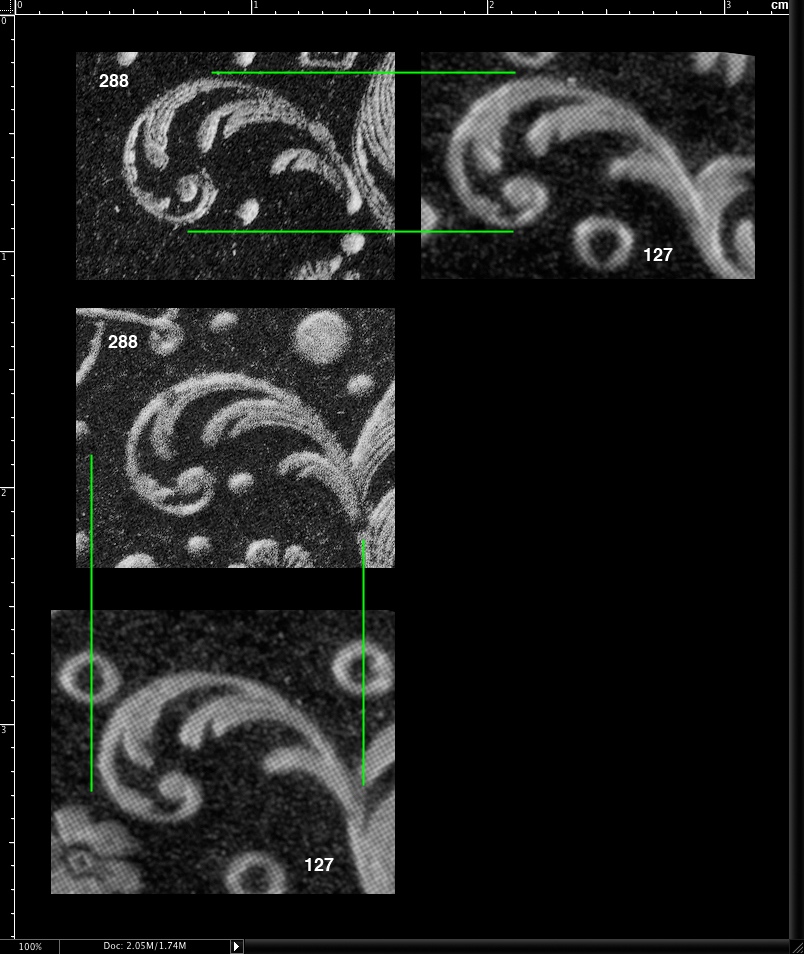
| In Comparative Diagram 5 we see real evidence that this is an imitation, the 288 tools copy closely the 127 tools except for one aspect, they do not match proportionally, it is not a matter of size it is proportion, they are shorter in length but close in height. We also see in this binding a wide range of different tools that we have not encountered previously. The 288 binding is from at least 1780 according to Barber's notes, Fétil started working professionally in 1748 by 1780 he may have been nearly 60 years of age and perhaps had already retired before this binding was even made. |
|
click here to return to the HOME page. click here to see an INDEX of the 2017 pages. see below links to previous work |
| Even experts are sometimes wrong, before you spend thousands on a book, please do your own research! Just because I say a certain binding can be attributed to le Maitre isn't any kind of guarantee, don't take my word for it, go a step further and get your own proof. In these pages I have provided you with a way of doing just that. |
| Virtual Bookings, created by L. A. Miller | return to the Home page of VIRTUAL BOOKBINDINGS |